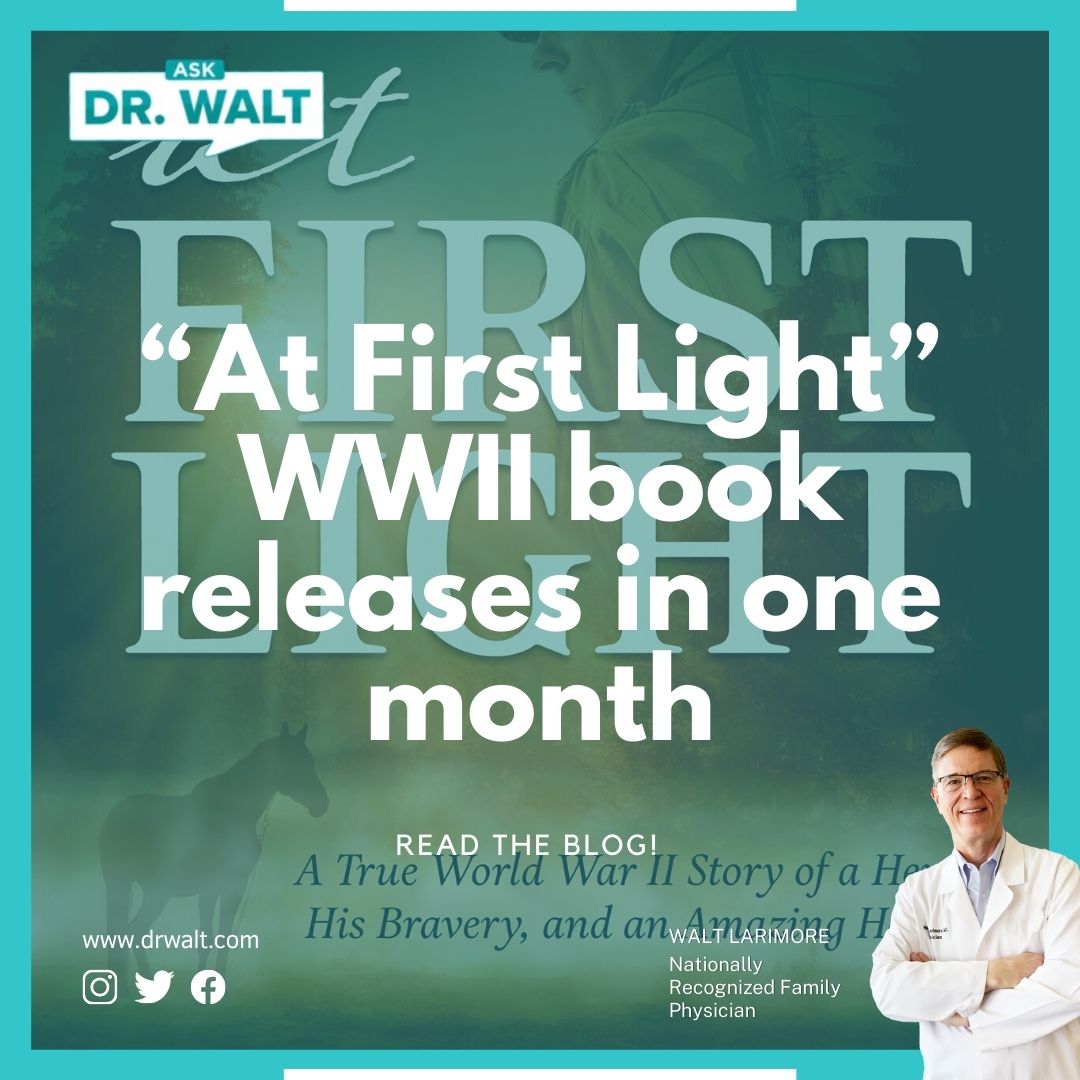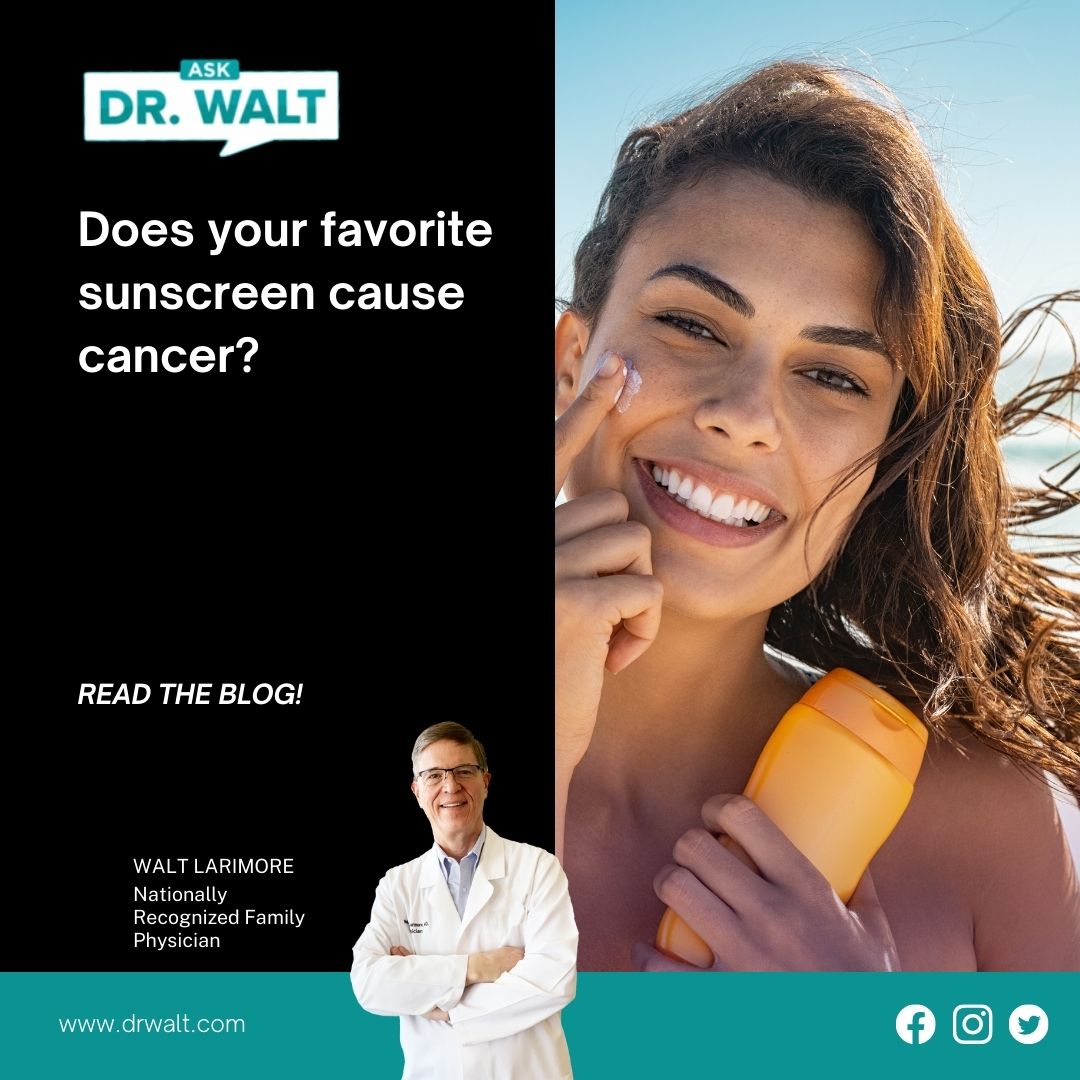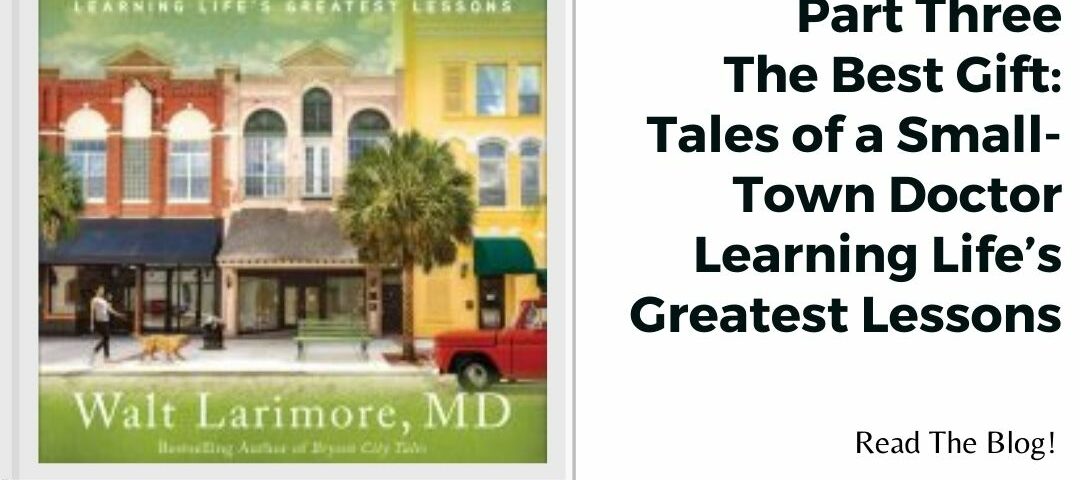
“At First Light” WWII book releases in one month
March 19, 2022
Does your favorite sunscreen cause cancer?
March 21, 2022SNEAK PEAK – Part Three – The Best Gift: Tales of a Small-Town Doctor Learning Life’s Greatest Lessons
With the permission of my publisher, for the month of March, I’m giving you a SNEAK PEEK of the first four chapters of my latest book on my family medicine years in the then-small-town of Kissimmee, Florida. Here’s Chapter THREE of The Best Gift: Tales of a Small-Town Doctor Learning Life’s Greatest Lessons.
Order Here
CHAPTER THREE
IT’S HOT HERE
After four years of practice in Bryson City, North Carolina, on the southern border of the Great Smoky Mountains National Park, my young family moved to Kissimmee in Central Florida, where we lived in a small ranch home as John Hartman, MD, and I built our family medicine practice.
John, his wife, Cleta, and their three girls had purchased one of the few houses on the shore of Lake Tohopekaliga, which is very close to Kissimmee’s historic downtown. These heirloom homes, some of them over fifty years old, infrequently appeared on the market. After a patient of mine mentioned that hers was going up for sale as she was looking to downsize, Barb, my wife, and I visited with her. Only three doors down from the Hartmans’ home, it turned out that this patient’s gorgeous lakeside home, with its large southern live oak trees providing ample shade on three acres, was ideal for us. We quickly sold our first home while completing the appraisals, inspections, and legal agreements on the lakeside home in record time. We were convinced it would be our forever home; however, it needed some minor renovations. Our contractor estimated the face-lift would take several weeks, so we moved into a rental house in a neighborhood just across the street.
John and Cleta introduced us to our new next-door neighbors, Bill and Polly Prather. Bill, like many locals, was a descendant of Florida pioneers. Being a retiree and part-time travel agent allowed him to cultivate relationships with novice bird-watchers like me. We would often “bird” together on Saturdays. I rarely talked because Bill had so much to say. His knowledge of birds, Florida history, the cattle industry, church history, and myriad other topics was legendary, as was his wry sense of humor.
****
One scorching midsummer day, Bill and I drove to the ranch owned by Geech and Connie Partin. They were patients in our practice and had given Bill and me permission to walk the property whenever we desired. Their driveway was one mile of dirt road. The earthy, damp fragrance of the countryside permeated the heavy, humid air as we drove by lush pastures occupied by grazing Brahman and Angus cattle. We parked in front of their small brick home.
After a few hours of hiking and bird-watching, we arrived back at the car. Geech and Connie came out to greet us. Geech’s round face was tan and creased by years of sun and weather. He was short, stocky, and well-muscled, with fingers twisted and ravaged by arthritis and many cowboying fractures. Connie’s silver hair crowned a thin face, wrinkled from ranch living, but with a radiant smile that expressed welcome. She carried a tray with a pitcher of cold tea and glasses. “Won’t you two have a seat and join us a bit?”
“How could we say no?” Bill exclaimed.
“It’s a sweltering day, ain’t it?” Geech said as we all sat under the shade of a tree, putting his iced glass up to his forehead. “It’s hotter than blue blazes. Why, I believe it’s hot enough to fry eggs on the sidewalk or for our chickens to lay some hard-boiled eggs.”
“Here in Osceola County,” Bill said, “there are only two seasons: summer’s here or summer’s coming.”
Geech laughed. “I’ve always said, ‘There’s only two seasons around here: January and summer!’”
A large bull ambled up to the fence a few yards behind us and bellowed. “Doc, you remember Wrinkles,” Geech boasted. “You’ve met him on trips out here.” He turned to Bill. “He’s my favorite, and he knows it. Weighs almost two tons, but he’s just a big, blubbering baby. He follows me around the pastures like a puppy.” Geech laughed. How I loved his laughter, which came easily for him. We finished our tea and said our goodbyes. However, when I opened the car door, it felt like I was opening an oven door with the heating element turned up high.
“This car is so hot, I’m sweating like a politician on election day,” Bill commented as he turned the air on high. We had to wait a moment for the “cool” air to blow in before we could head home.
Once we were moving, I commented on the temperature. “I can’t imagine living here without air-conditioning!”
“You’re not the only one to complain about living here. I’ve read about Spanish soldiers stationed down here in the early 1800s calling Florida a hideous, loathsome, diabolical, God-abandoned mosquito refuge. Those were their actual words!”
Bill laughed. “Even the future US president Zachary Taylor, who commanded troops down here for two years, said that he wouldn’t trade a square foot of Michigan or Ohio for a square mile of Florida.”
I chuckled. “Sounds like the Sunshine State wasn’t very popular with early settlers.”
“You’re right. It’s easy to forget that Central and South Florida were once America’s last frontier. Settlements down here didn’t even begin until well after we won the West. In the 1880s, the numbers of hearty pioneers in Central Florida were only in the hundreds. One visitor said if he owned land here and in hell, he would rent the property here to someone else and live in hell.”
“What brought folks to this area?” I asked.
“An industrialist from Philadelphia, Hamilton Disston, bought four million acres of Central Florida from the State of Florida in 1881 for twenty-five cents an acre. He began dredging canals, waterways, and draining the swamplands. His headquarters was in a small pioneer settlement on the shores of Lake Toho called Allendale. In 1884 Allendale incorporated as Kissimmee City and developed into a hub of commerce and trade.”
“What type of industry? Allendale had to be some kind of backwater place back then.”
“Literally!” Bill said, laughing. “The town became the home port for steamboats plying the Kissimmee River from Lake Toho south to Lake Okeechobee, which some call Florida’s Inland Sea. But it was the railroad that took Kissimmee to another level. The first one connected Kissimmee to Tampa and Jacksonville. The lumber and cattle industry exploded. By 1890, the population of Kissimmee had ballooned up to almost 2,500 folks.”
“Cattle are still big here. How long did the lumber industry last?”
Bill shook his head. “Not long. And with the loss of lumber, the population shrank to less than a thousand. After World War II, the city’s focus shifted to tourism. Then in 1971, Disney World spurred growth here in Kissimmee to the 15,000 we have today.”
“Has the growth been good?”
Bill thought before answering. “Locals learn to put up with the heat, humidity, mosquitoes, snakes, alligators, and bugs, but the worst varmints for most of us are the growing swarms of tourists. But for me, the most significant positive is the folks that live here. Down-to-earth, as honest as the day is long. They would do about anything for you. Living here my whole life has given me lasting memories of a little town where people have a lot of fondness and respect for each other.”
We pulled up to my rental house. “You say that I’ll get used to this weather, Bill, and maybe so, but I’m not so sure. Anyway, we’ve fallen in love with the people here in Kissimmee. I can’t imagine ever leaving.”
“I don’t think anyone should underplay the importance of living where people are kind, caring, and compassionate. That’s what makes a place a community, not just a town. And Kissimmee still has that in spades.”
I nodded and thanked him for a morning of terrific birding and his review of local lore and legends. But most of all, I cherished his giving me a fresh appreciation of our new hometown—one in which I hoped my family might one day be considered “locals” and not “outsiders.”[i]
****
[i] For this chapter, I refreshed my memory with the following: (1) an interview with Geech and Connie’s daughter, Kathy Baker, in October 2019; (2) Jovida Fletcher, “Coming of Age in Osceola in the ’50s Meant a Lot of Freedom,” Orlando Sentinel, June 3, 1990, tinyurl.com/y53lgplm (subscription required); (3) “History of Kissimmee,” Osceola County, tinyurl.com/yy3gw9z2; (4) Larry Manfredi, Birds of Central Florida: A Guide to Common and Notable Species, pamphlet ed. (Ft. Lauderdale, FL: Quick Reference Publishing, Inc., 2009); and (5) “One Town’s Origins: The History of Kissimmee,” Osceola County Historical Society, tinyurl.com/53m485hn.
© Copyright WLL, INC. 2022.


